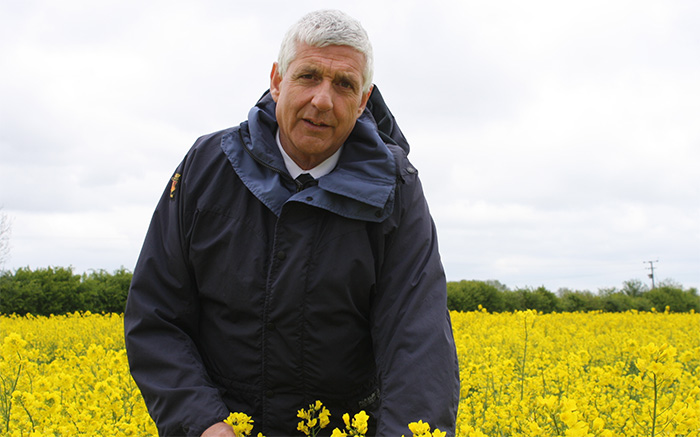
Growing oilseed rape in the absence of neonicotinoid seed treatments and the subsequent crop losses from flea beetle and Turnip yellows virus (TuYV) is a major concern looking ahead to this autumn says Philip Marr, OSR expert with Agrii.
“With OSR selling at £250/tonne no-one wants to invest in crops that won’t reach their full potential, and without the necessary crop protection against these threats, either from seed treatments and foliar insecticides, OSR crops will not reach their full yield potential.”
“Flea beetle can destroy establishing crops, however once the crop is established TuYV carried by the aphids Myzus persicae is the biggest threat and can result in as much as 30% yield deduction.”
Up to 72% of Myzus persicae are carrying the Turnip yellow virus, and studies show that if aphids are present, infection is likely to follow.
“This is confirmed by the recent results of a three year study at the University of Warwick showing just how widespread the virus is,” says Dr John Walsh of Warwick University.
“In 2007 up to 90% incidence of the virus was detected in some crops whereas in 2008 it was only 24% - but this was a lower aphid year. In 2009 incidences were way up at 100% - this being a high aphid pressure year.”
“TuYV is also widespread in brassica vegetable crops, and these can act as a green bridge, allowing the virus to cross over to oilseed rape with a subsequent constant circulating re-infection cycle between crops.”
“In the crops we have monitored infection usually occurs in the autumn however up to now when inoculum pressures have not been too high during the autumn, plants have been protected by seed treatments. With the loss of these, autumn infection will become greater.”
Dr Walsh added that often the symptoms of TuYV go undiagnosed as the virus does not result in clearly distinguishable symptoms, so growers and agronomists are unaware that they have an infection.
“There can be reddening or yellowing of the leaves, but this is often put down to other stresses such as drought or nutrient deficiencies. Secondary symptoms are stunted plants, leaf area reduction, reduced primary branching, fewer seeds per pod, and reduced oil content.”
“Timing of infection can have an influence on the levels of infection; the earlier the infection the greater the yield loss so as autumn control becomes more difficult we are looking at increased infection levels and corresponding yield losses from the virus.”
“Whilst foliar insecticides can offer some solution, there is widespread resistance to pyrethroids and primicarb to consider,” adds Mr Marr. “Plenum is the best option going forward but it’s important to recognise that it can only offer control in the autumn for a limited period.”
What role can varietal resistance play?
In 2000, breeders Limagrain UK were involved in a programme with the University of Gottingen in Germany, to determine the yield losses from TuYV and attempt to develop resistance to the virus.
“The project was successful and resulted in the isolation of a major gene for virus resistance, allowing Limagrain to develop the associated molecular marker for the TuYV resistant gene,” says Vasilis Gegas, oilseed rape breeder with Limagrain.
“We have now produced the first commercial TuYV-resistant variety as a result of this work, Amalie.”
Amalie is a conventional OSR variety which has single gene resistance to TuYV. “The variety has completed NL trials and will be considered for RL trials in 2014-15 which will be the first year without seed treatments so is a real solution to growers and agronomists in the fight against aphid-borne TuYV,” adds Les Daubney, product manager for oilseeds with Limagrain.
A robust and high yielding variety in its own right, in NL trials the variety’s treated yield came out at 99% with Gross Output at 100%. In Limagrain’s own trials, conducted in the absence of seed treatments, Amalie’s yield was 110% with some sites yielding 115% and others 99%.
“The variation in yield is a result of the differences in virus infection levels, showing higher relative yields in high-infection years – which is key.”
“Although the resistance to TuYV is a key attribute of the variety and certainly one for growers and agronomists to make use of in combatting some of the challenges ahead, it’s also important to note that the agronomic package of Amalie is on a par with market favourite, DK Cabernet,” says Mr Daubney.
“Earlier to flower and mature, Amalie is also shorter than DK Cabernet with better resistance ratings to light leaf spot and stem canker.”
Amalie is available commercially in 2014, although seed in this first year of production is limited.
